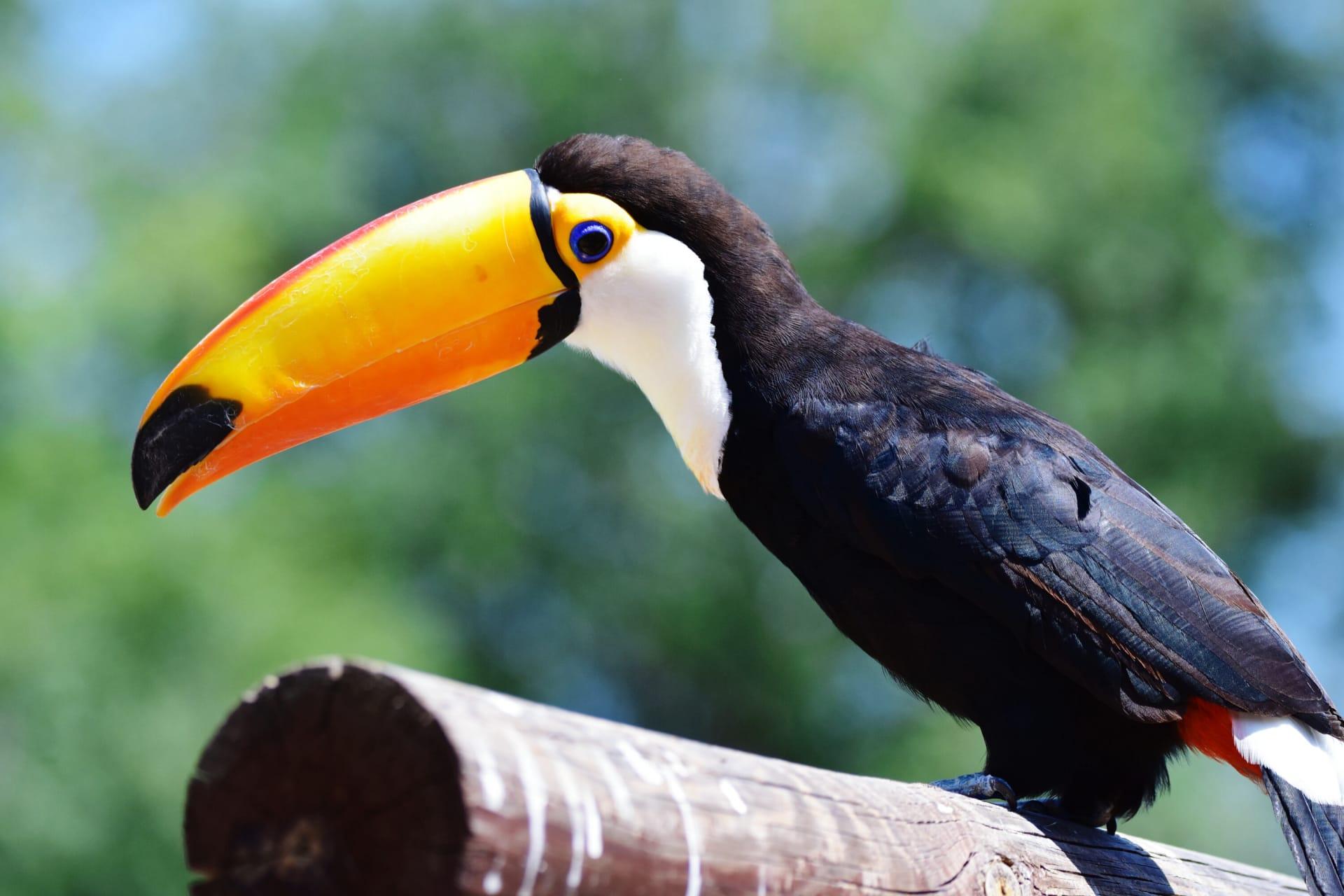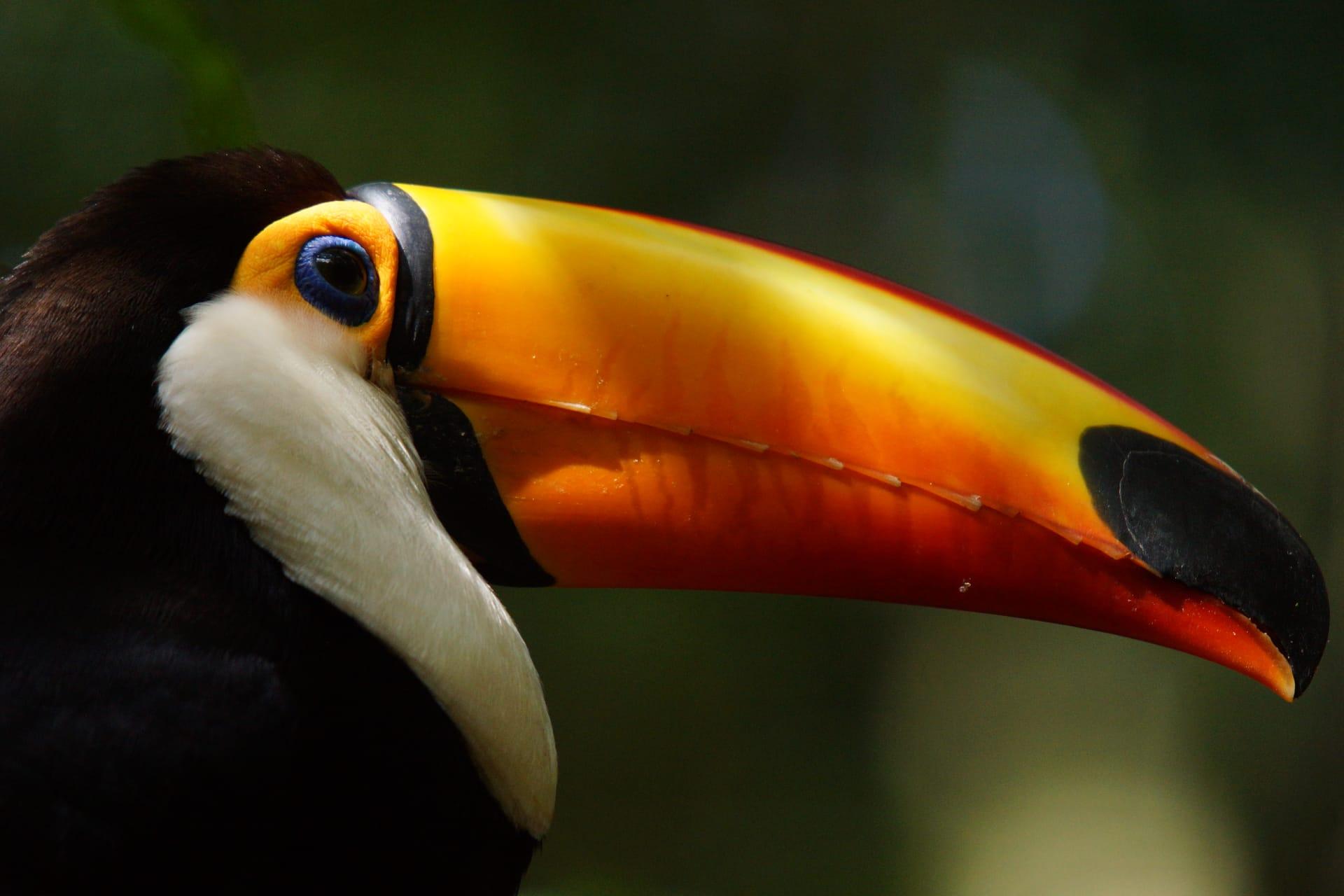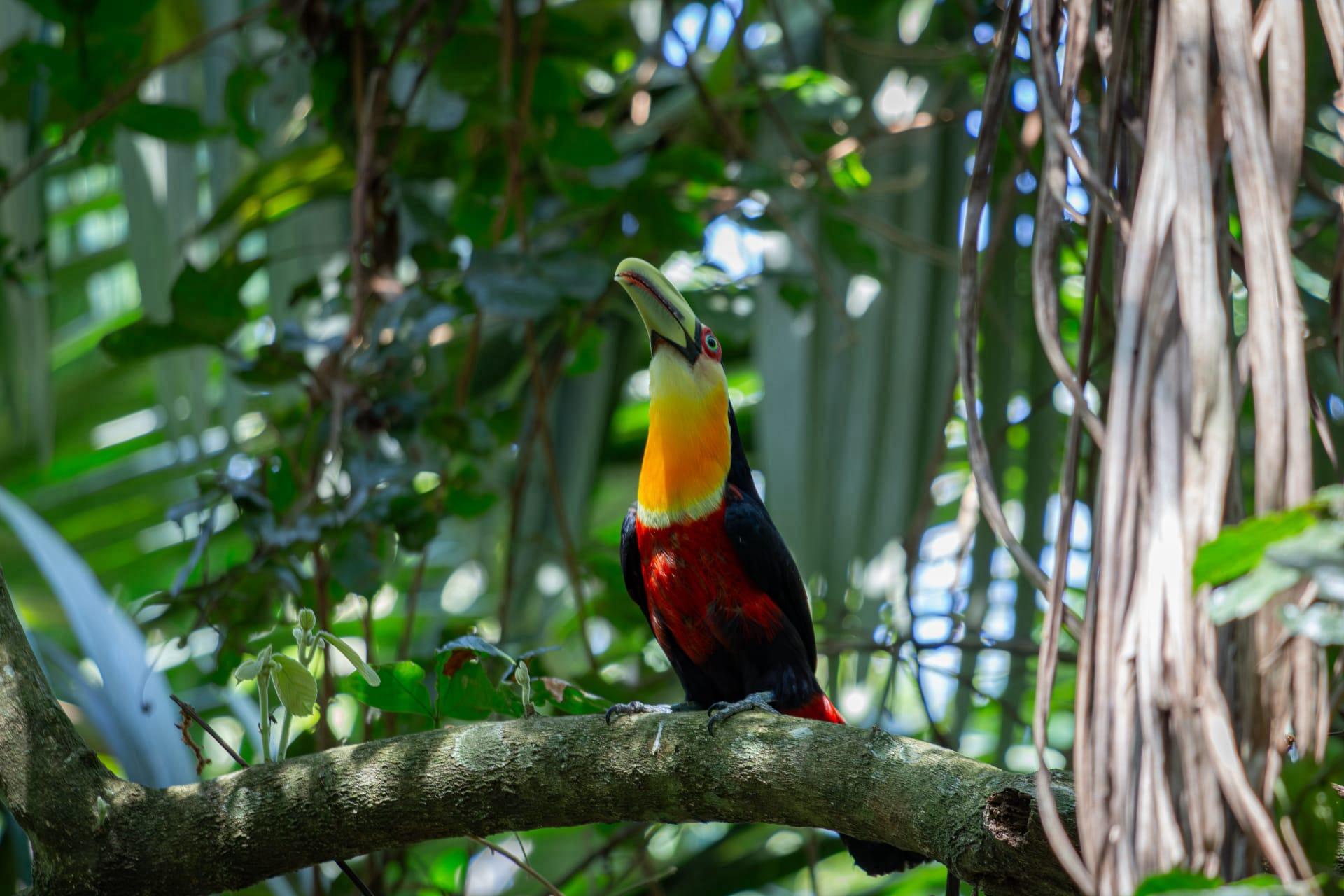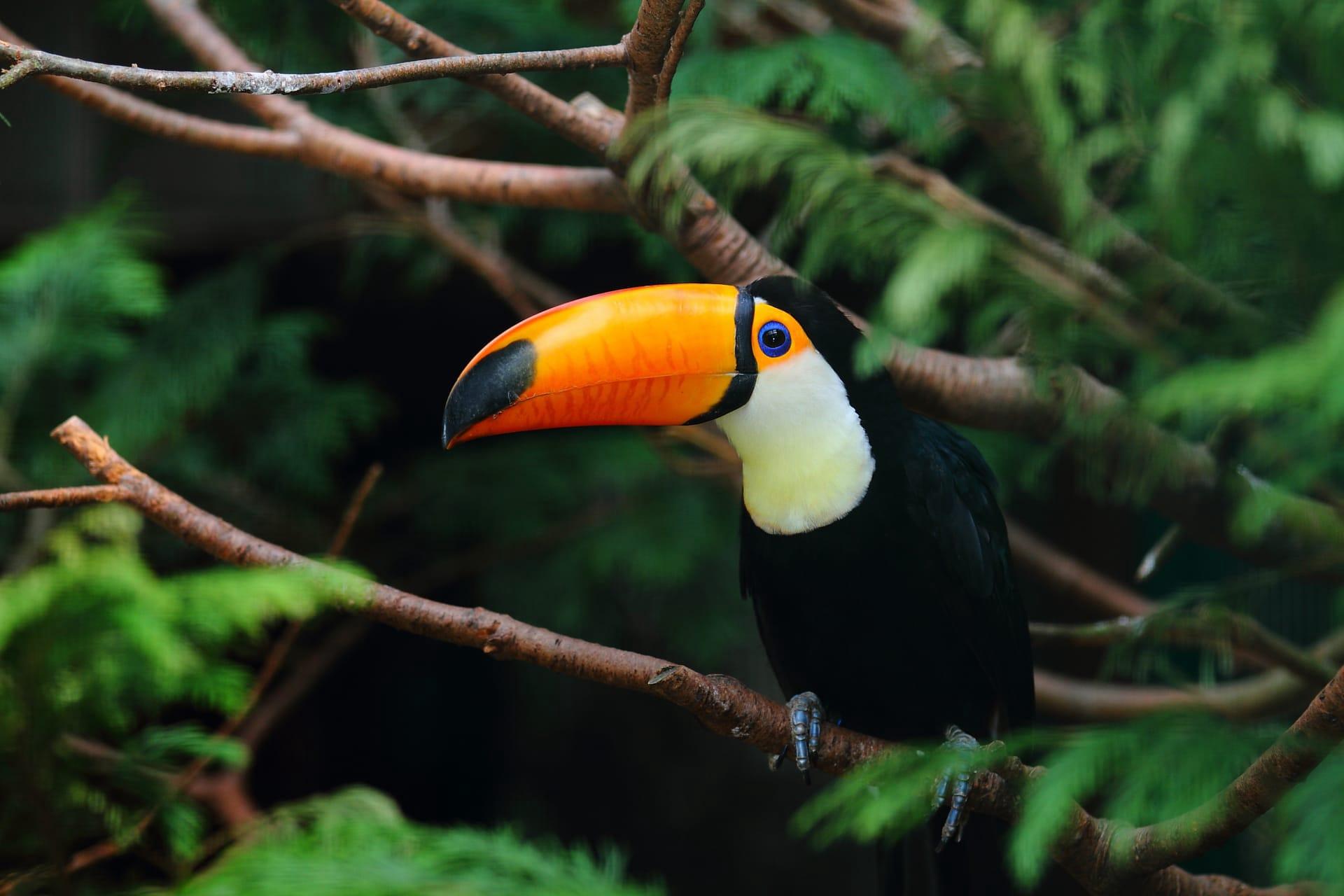Toucan
- Home /
- Mini Encyclopedia /
- Animal /
- Toucan
1
Toucans are a group of brightly colored birds belonging to the family Ramphastidae, within the order Piciformes. This family includes about 40 different species, varying in size and color patterns. One of the most distinctive features of toucans is their large, colorful bills, which can be up to half the length of their body. Despite their size, these bills are surprisingly lightweight due to their hollow structure. Species like the Toco Toucan, the largest and probably most recognizable species, flaunt a bill that can reach up to 7.5 inches in length. These birds have short, compact bodies, and their plumage is typically vibrant, featuring a mix of black, white, yellow, and red.
Toucans are native to the neotropical regions, predominantly found in the rainforests of Central and South America. Their range extends from southern Mexico to northern Argentina and Uruguay. They reside in various habitats within this region, including tropical and subtropical rainforests, savannas, and shrublands. Toucans are predominantly arboreal, meaning they spend most of their time in trees. They prefer areas of dense foliage where they can use their unique bills to reach fruit on branches that are too small to support their weight. The distribution of specific species varies, with some like the Keel-billed Toucan primarily found in Central America, while others like the Channel-billed Toucan are more widespread, inhabiting areas from eastern Colombia to southern Brazil.

2
Question: Is it true that toucans use their large bills primarily for defense or hunting?
Answer: Contrary to popular belief, the primary function of a toucan's large bill is not for defense or hunting. Instead, its main purpose is to aid in feeding. The bill is adapted to pluck and eat a variety of fruits, which makes up the majority of their diet. The serrated edge of the bill helps in slicing through tough fruit skins. Additionally, the bill plays a role in thermoregulation. Its large surface area allows toucans to release heat and regulate their body temperature in their hot, humid rainforest habitats. Toucans also use their bills in social interactions and mating displays, where they toss fruit to each other as part of courtship behavior.

3
Toucans have developed several survival strategies that help them thrive in their habitats. One key strategy is their diet; they primarily eat fruit, but they are opportunistic feeders and will occasionally eat insects, small reptiles, and bird eggs. This varied diet helps them take advantage of different food sources throughout the year. Their long, large bill is not just for show; it's a critical tool for reaching fruits on branches that are too weak to support their weight. The bird uses its bill to deftly pluck fruit and bring it to its mouth.
In terms of nesting, toucans are cavity nesters, meaning they use holes in trees for their nests. They often occupy nests abandoned by other birds, like woodpeckers. This nesting strategy offers protection for their eggs and young from predators. Social behavior is another survival strategy. Toucans are typically found in small flocks, which helps in foraging and provides some protection against predators. Their loud, croaking calls play a vital role in communication within these groups, especially across the dense rainforest.

4
In their ecosystem, toucans play a significant role as seed dispersers. Their fruit-based diet means they consume a lot of seeds, which are then dispersed throughout the forest in their droppings. This seed dispersal is crucial for the regeneration and spread of many rainforest plants. Their role in the ecosystem is a great example of mutualism, where the toucan benefits from the food source, and the plants benefit from the spread of their seeds.
Toucans also play a part in the food chain. While they are predators to smaller insects and eggs, they are also prey for larger animals. Predators of toucans include large birds of prey, like hawks and eagles, and mammals such as jaguars and large snakes. Their bright plumage, though attractive, can make them more visible to predators. However, when resting in the foliage, their coloration can act as camouflage, blending with the bright fruits and flowers of the rainforest.

5
Film: "The Life of Toucans" is a fascinating documentary produced in the United States in 2018. This documentary delves into the vibrant world of toucans, showcasing their daily life, habits, and the challenges they face in the wild. It provides a detailed look at their feeding behaviors, social interactions, and the incredible biodiversity of their rainforest habitat.
Book: "Toucans of the Americas" is an informative book published in Canada in 2020. Written by ornithologist Sarah Langford, the book offers an in-depth exploration of the various toucan species across Central and South America. Langford's work includes detailed descriptions of their physical characteristics, behaviors, and the ecological roles they play, supplemented by vivid photographs.
Book: "Bill Wonders: The Unique Adaptations of Toucans" is another notable book, published in the United Kingdom in 2022 by biologist James Peterson. The book focuses on the anatomical marvel of the toucan's bill and how it has evolved to suit the bird's needs. Peterson's engaging narrative combines scientific facts with interesting anecdotes, making it accessible to a wide range of readers interested in avian biology and evolution.